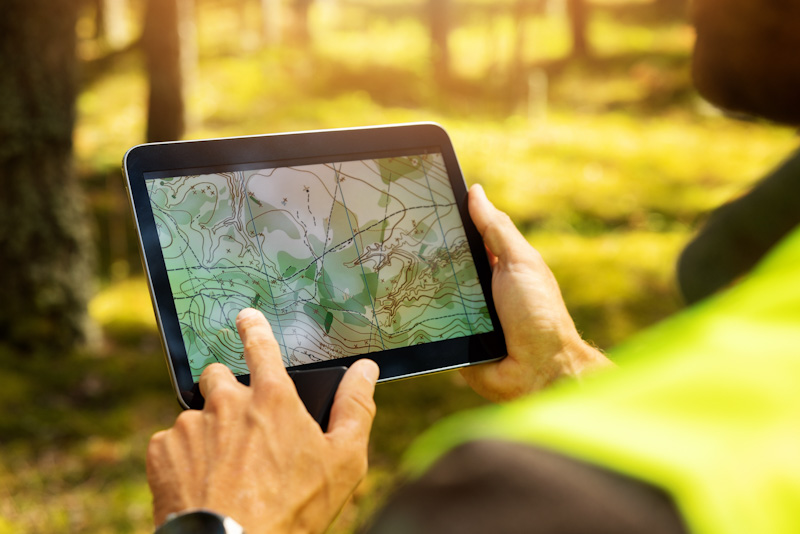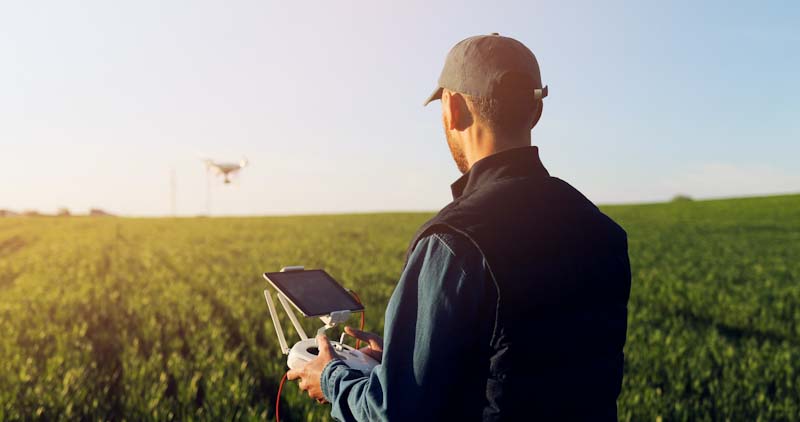A couple of years ago, my wife and I bought our forever home in a small town, 35 miles outside the city which we had been living in. We’d both wanted to live in a small town for years, both from the peace and quiet it offered and from a survival viewpoint. It would take a lot worse situation to make us have to bug out, than it would have, when we were living in the city.
I’ve long recommended small rural towns as a good place to bug out to; but to do so, you really need to establish a presence there before its time to bug out. Besides, you’ve got to establish a supply cache in town, or you’re not going to have food to eat. The myth that small rural towns have lots of food is nothing more than a myth. It only happens at harvest time, assuming that the town is agriculturally based; and that food doesn’t stay there long.
Of course, moving meant leaving behind a lot of work that I had done to our previous home, preparing it to serve as our primary survival retreat. I’m still working on bringing this one up to snuff, as there were a lot of projects that I had done to the previous family home. But in the long run, it will be worth it and we’ll actually be better prepared to face a disaster.
Part of this process has been learning the new community we’ve moved to. That’s actually a much more complex process for us preppers, than it is for everyone else; or at least it should be. Everyone else wants to know where the shops and restaurants are, while we should want to know much more.
Any community has a lot of things which are hidden from casual view, hiding in plain sight. The house I had before was within two blocks of an irrigation canal, providing me with a ready source of emergency water. The house I had before that had a similar irrigation canal right behind our back fence. Because we didn’t have a back gate, I lived in that house for months before I knew it was there.
Knowing such things can mean the difference between life and death. I don’t care how well prepared you are, there are always things you’ll miss, because you don’t realize that you need them. I thought I was ready for a major pandemic; but when it came, I found that I didn’t have enough of anything. I ran out of PPE, hand sanitizer and Clorox wipes, putting me in the position of having to make my own, just like millions of other people. Fortunately for me, I knew how.
Start with Water
The first thing you want to know about your community is what water sources are available. This should include both permanent and sporadic water sources. If a pond forms every time there’s a heavy rain, you want to know about it, even though it won’t show up on any map.
The permanent water sources are going to show up on both Google Maps and any topographical maps you are able to come up with of your community. You want to make sure you know where those are, as well as the closest access points to get to them. Many water sources will be behind buildings and properties, which may deny you access to them. But there’s always an access point, if you can find it.
Finding the intermittent water sources is much more challenging, as they probably won’t show up on any map; either physical or electronic. You’ll have to get out and look for them, seeking where they may be hiding. Before doing that though, take a good look at your topographic map, looking for low points where water is likely to gather. Be sure to mark these intermittent sites on your personal map.
Finding Fuel
One of the things we don’t talk about much in the prepping community is where to find fuel. There are three basic types of fuel we need: gasoline, propane and firewood. Gasoline is generally the easier type to find, as there are usually plenty of gas stations in any community. Even my little town of 4,000 people has 9 gas stations. That’s something I hadn’t realized by driving around town; but by counting them on Google Maps. While they will all probably run out of gas during a disaster, they may also have some residual gas in their tanks, which could be sucked out with a small electric pump.
Propane is generally not as easy to find as gasoline, but can be just as useful, especially if you are using propane as an alternate means of cooking or heating. The big problem with propane is that you have to have the tanks for it; but you can get an adapter which will allow you to siphon off gas from larger tanks and fill smaller ones.
By the way, there are also adapters which will allow you to fill the one-pound propane cylinders from a 20-pound tank. If you have propane heaters or camp stoves which run off of those one-pound cylinders, it’s much cheaper to refill the ones you have, rather than to keep buying them.
The third kind of fuel we’ll need and the one which we’ll need the most of, is firewood. Most of us have a stack of firewood behind the house, but you’d be surprised just how much firewood you will go through, if you are stuck trying to heat your home through a winter. On the average, people who heat with wood go through four to six cords of wood per winter; and that’s quality hardwood, not softwood.
Where can you get more firewood when your supply starts running low? Keep in mind that you will probably not have much gasoline to use, so you won’t want to drive all that far. The most likely places, such as local parks and empty lots, will probably already have lost their trees to others, who didn’t’ bother to stockpile any wood, so you’ll need to go further than that. Know where you can go and just how much gasoline it’s going to take to make the trip.
What About Food?
Food is the one thing that we all stockpile the most. But it’s also something that we will go through quickly. The common belief is that the grocery stores will sell out in about a day, and after seeing what happened during the pandemic, I’d have to say that’s true. But does that mean that there aren’t any local sources of food that will still be available?
There are a lot of other places, besides grocery stores, which have food, such as gas stations, convenience stores, bars, restaurants, school cafeterias, hospitals, and even the checkout line at the hardware store. While those will probably empty out just as fast as the grocery stores will, we should have them noted anyway, just in case something survives.
Going a step further than that we find the restaurant supply stores and other food wholesalers that restaurants and stores get their food from. Few people know where these wholesalers are, mostly because they don’t have an obvious storefront. Some are warehouse operations, set in industrial areas or hidden in side-streets of commercial zones. But they’re all listed in the phone book, which gives us a good reason to keep a phone book around.
There may also be food packaging plants in your town; places which buy raw foodstuffs and turn it into the myriad of food products we find in our supermarkets. These are harder to find, but will generally have both finished product and their raw ingredients on-hand, should a disaster strike. While that food might go bad from lack of refrigeration, there are also food products which don’t require cold to remain preserved.
Taking the last step in our search, we need to find out where the farmers are in our area. Living in a small town, I’m much closer to the farmers than I was in the city. Even so, it has taken a number of “Sunday drives” out into the country surrounding our home to find them. You can’t usually find farms listed in the local phone book and they are unlikely to take out ads in the paper. These require some real searching to find; but once you do, you’ve got a source that few others will be aware of.
Wholesale Distributors
At some point in time, rebuilding from the disaster or trying to bring some level of convenience back into our lives is going to become important. When it does, we’re going to need access to a large range of commercial supplies that none of us is stockpiling. I mean, how many of us have enough electrical wire stockpiled to rebuild some sort of communications system in our community?
These projects will probably start out small and grow rapidly once they pass proof of concept. Literally everyone will be interested in anything that can be done to return some measure of “normalcy” to their lives. If you come up with some way of communicating with your neighbors, without having to go outside, you can be sure that their neighbors will want to get in on it, then their neighbors, then theirs as well, until the whole community is interconnected again. The same can be said for producing electricity, having running water, a working sewage system or anything else that connects with modern life.
While we might want to remain in the shadows, many of us are the best people in our communities to lead such efforts, because of the knowledge we possess. With that being the case, it only makes sense for us to know where the necessary materials will be, before the disaster strikes. For just about any field of endeavor we can imagine, there are wholesalers in our cities, selling what’s needed to accomplish that particular thing. All we need to know is where they are and what they carry.
Granted, we’ll be able to garner a lot of useful materials from local lumberyards and home improvement centers. But that’s on the individual home level. When it comes to higher level collaboration, we’re going to need industrial equipment supplies. That’s why I’m mentioning these places. All I’m saying is find out where they are and add them to your map, so that when the time comes, you’ll be able to scavenge whatever you need.
Whatever Else You Can Find
There are likely other areas that I haven’t mentioned; areas that will occur to you, but didn’t occur to me. I’ve written this article from a rather general point of view; but there are many of you who will be reading it, who are specialists in one field or another. There are things you will need for that specialty, especially when we get past the initial survival problem and start working on making things better.
Add whatever personal finds you have, to your map, even if they don’t seem necessary. Keep a phone book on hand and a paper map too. That way, your chances of finding what you need will be much greater, than all those other people who are just stumbling around, looking for whatever they can find.








illini Warrior | August 11, 2023
|
“mapping” out your neighborhood and community also includes the people – they can be advantageous or a deficit – your investigation to figure them out and map them for a future SHTF ….
Zuckerrat | August 21, 2023
|
Medical supplies. Obvious would be hospitals and medical clinics. But don’t forget about safety supply, houses, home, health, care, supply, companies, and veterinary clinics.
Diana Davies | August 21, 2023
|
I have a mental.map of all thw fruit trees and bushes, as well.as edible and medicinal plants all along.my regular routes around town. So far I have only fpund one or two other people who.are.aware of this at all. Learn.what’s edible.around you and try preparing it so you know what you’re doing should it become necessity.
Also, slightly different topic, but make your flower beds into food sources like they did with cottage gardens in the past, when they had fruit and vegetables growing cheek by.joul with flowers for.decoration.